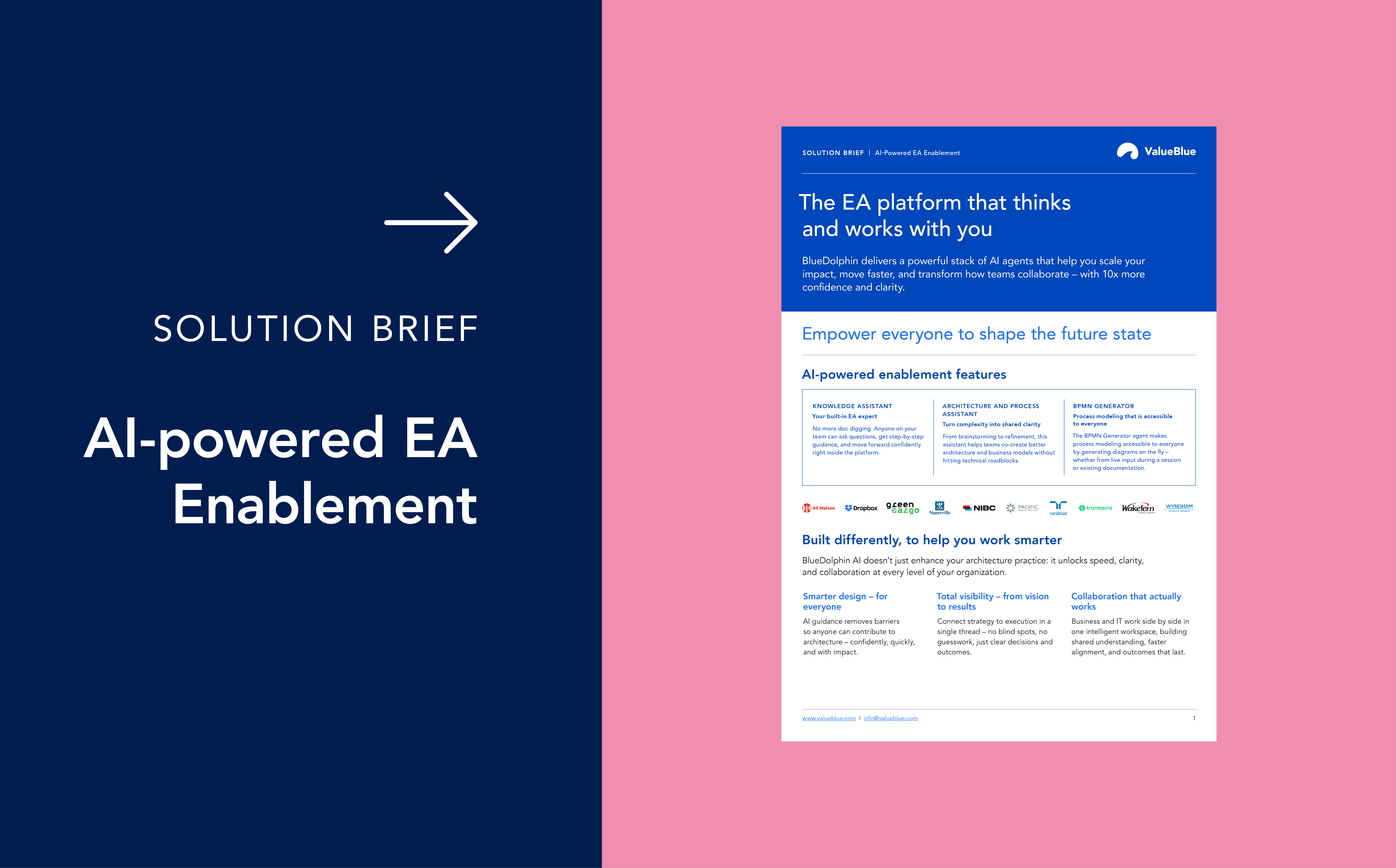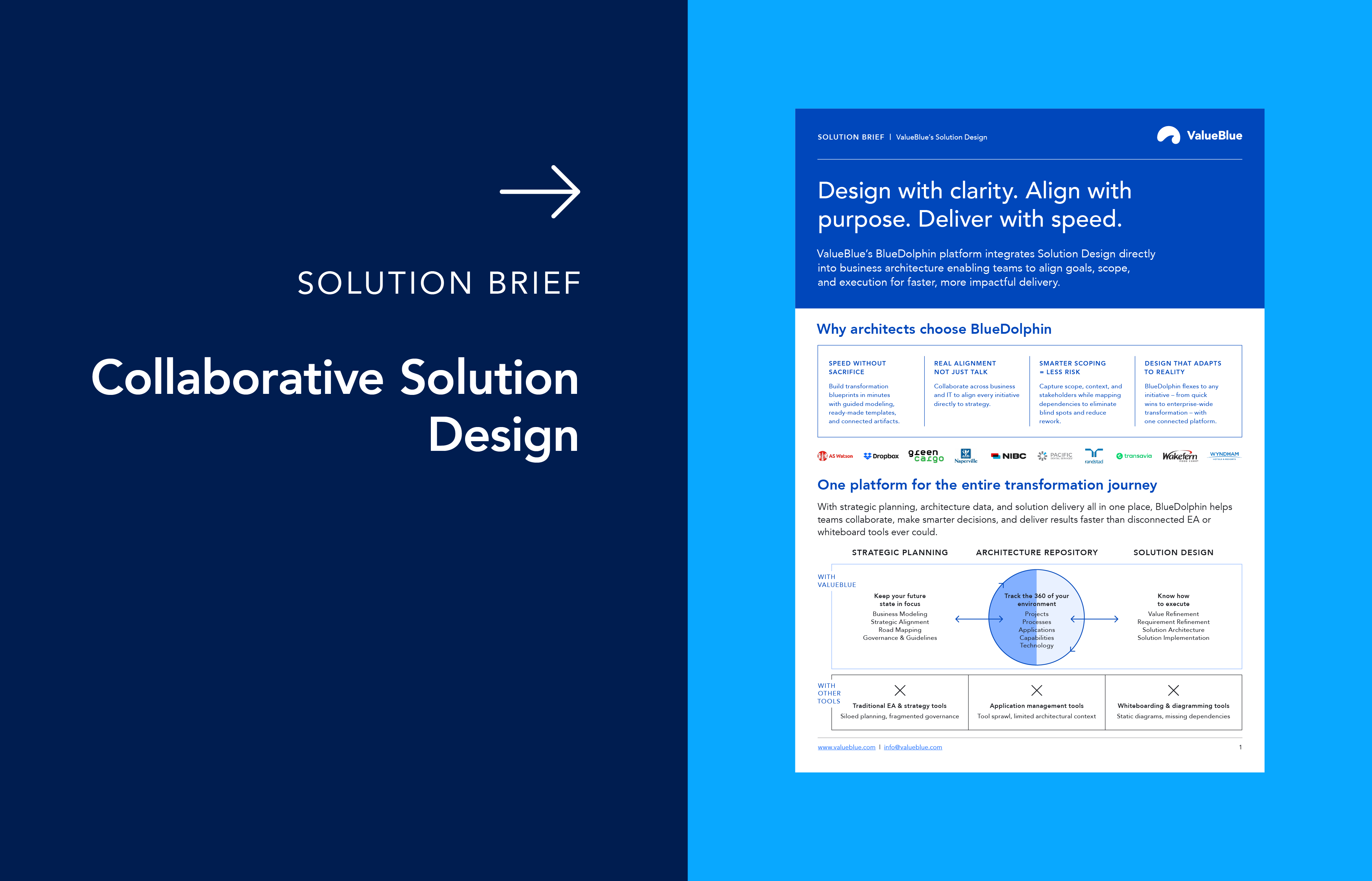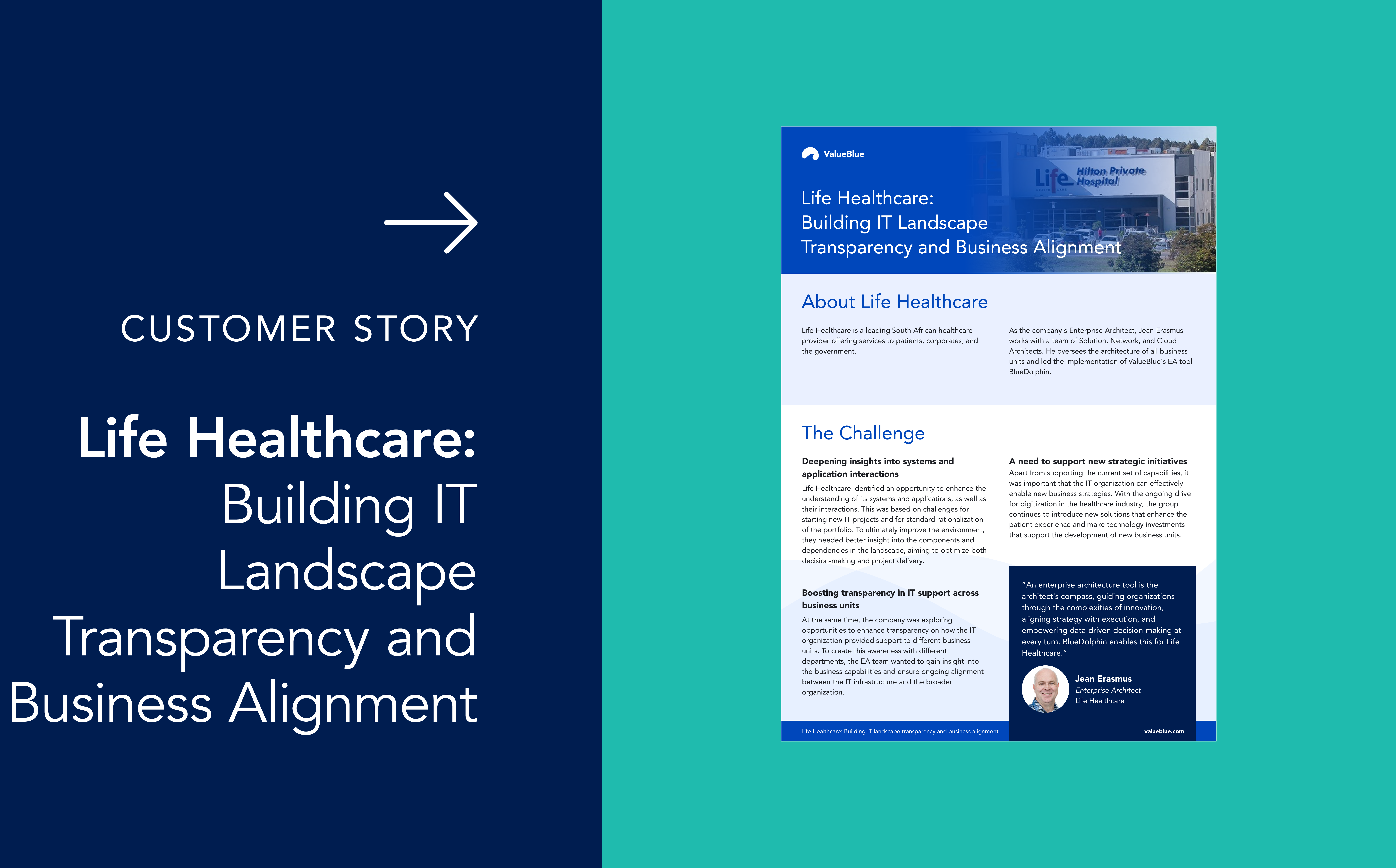A Comprehensive Guide to APM Fundamentals and Strategy
In 2025, most organizations run on hundreds of interconnected applications. Yet according to Gartner, only 13% of organizations have achieved high effectiveness in strategic portfolio management – a clear signal that many struggle to govern and align their application and investment portfolios. Managing this complexity is no longer just an IT function – it is a strategic discipline. Application Portfolio Management (APM) enables enterprises to understand, optimize, and align their technology landscape with business goals. In this guide we explore the fundamentals of APM, its strategic value, and how it supports enterprise-wide strategic portfolio management.
Table of contents
- What is Application Portfolio Management?
- Why do we need Application Portfolio Management?
- The role of APM in strategic portfolio management
- Core components of an effective APM strategy
- Building an APM roadmap
- Common challenges and best practices for implementing APM
- From application management to strategic value
- Key takeaways
- FAQ
What is Application Portfolio Management?
Application Portfolio Management is the practice of governing and optimizing an organization’s application landscape to achieve business objectives. It provides a structured view of all software assets, enabling data-driven decisions about which applications to invest in, modernize, or retire.
At its core, APM connects business and IT. By understanding how applications support capabilities, processes, and strategy, organizations can allocate resources more effectively. A comprehensive APM program delivers visibility across the PPM portfolio, allowing leaders to track lifecycle stages, technical fitness, and cost.
In practical terms, APM acts as the bridge between program and portfolio management (PPM) and Enterprise Architecture. It ensures that technology decisions are strategic, measurable, and directly tied to business outcomes.
The question many leaders ask – what is strategic portfolio management? – can be answered through the lens of APM. A well-governed application portfolio forms the foundation of a resilient, agile, and data-driven enterprise.
Why do we need Application Portfolio Management?
Without APM, IT landscapes become chaotic and expensive to maintain. Redundant, outdated, or underused applications accumulate over time, increasing costs and complexity. According to Gartner, mature IT organizations continuously review costs, rationalize spend before renewals, and eliminate outdated or duplicative technologies as part of a strategic IT cost-optimization discipline.
APM delivers strategic value in several key areas:
- Cost control – Eliminates redundancies and reduces software maintenance, licensing, and support expenses.
- Risk mitigation – Identifies unsupported or end-of-life applications that expose the business to security and compliance risks.
- Business alignment – Ensures that every application supports strategic goals and contributes measurable value.
- Operational efficiency – Streamlines processes, improves integration, and enhances overall IT performance.
- Agility – Prepares organizations to adapt quickly to market changes, mergers, and digital transformation initiatives.
APM is not only about optimizing IT assets. It is about enabling better decision-making and advancing strategy and portfolio management at every level of the organization.
The role of APM in strategic portfolio management
Strategic portfolio management focuses on balancing investments across initiatives that advance business objectives. In this context, APM supports the broader portfolio strategy in strategic management, providing transparency into how technology investments enable those initiatives.
For example:
- APM maps applications to business capabilities, revealing where gaps or overlaps exist.
- It highlights dependencies and risks within the application landscape, enabling more accurate planning.
- It informs investment prioritization by ranking applications based on business value and technical health.
When integrated with PPM portfolio and Enterprise Architecture, APM becomes a decision-support engine. APM also complements PPM program management, linking applications to the projects and programs that deliver business value. It ensures that strategy, portfolio management, and execution are aligned. Organizations can then prioritize modernization, cloud migration, and innovation based on actual data rather than assumptions.
APM transforms IT from a cost center into a strategic portfolio that fuels growth and competitive advantage.
Core components of an effective APM strategy
Every successful APM initiative includes a consistent set of practices. Together, these form the foundation for a disciplined PPM portfolio and strategy and portfolio management that connects IT performance to enterprise value.
1. Inventory and Assessment
Build a single source of truth by cataloguing all applications across the organization. This includes details such as ownership, cost, lifecycle stage, usage, and integration dependencies.
2. Rationalization
Evaluate each application’s business value and technical fitness. Identify redundancies, inefficiencies, or outdated technologies that can be retired or consolidated.
3. Optimization
Align the application portfolio with business priorities. Optimize for functionality, performance, and cost while ensuring the right mix of innovation and stability.
4. Governance and Lifecycle Management
Establish clear policies for onboarding, maintaining, and retiring applications. Governance ensures standardization and accountability across business units.
5. Continuous Improvement
Treat APM as an ongoing discipline, not a one-time project. As business needs evolve, continuously monitor KPIs such as cost savings, utilization, and application performance.
These steps work together to create a comprehensive governance model that supports enterprise-wide portfolio management and drives operational excellence.
Building an APM roadmap
An APM roadmap outlines how an organization moves from fragmented, manual management to a mature, data-driven approach. The following stages mirror best practices used by leading enterprises:
1. Define scope and stakeholders
Identify the objectives and participants of your APM initiative. Clarify whether the primary goal is cost reduction, modernization, or improved alignment with business strategy.
2. Create a unified inventory
Collect data from existing systems, such as configuration management databases, spreadsheets, or SaaS management tools. Consolidate it into a central repository that serves as the single source of truth.
3. Assess business value vs. technical fit
Use frameworks such as the TIME model (Tolerate, Invest, Migrate, Eliminate) to evaluate applications. High-value, high-fit applications are candidates for investment, while low-value, low-fit applications are ready for retirement.
4. Prioritize transformation initiatives
Link modernization or retirement projects to strategic goals. For example, if customer experience is a key focus, prioritize upgrading or consolidating front-end systems.
5. Establish continuous governance
Implement governance mechanisms to maintain portfolio accuracy. Schedule regular reviews, update data sources, and measure progress against KPIs such as reduced total cost of ownership and improved business alignment.
A clear roadmap ensures that APM outcomes are measurable and repeatable – a key success factor for portfolio strategy in strategic management.

Common challenges and best practices for implementing APM
Implementing APM across an enterprise can be complex. Common challenges include data quality issues, resistance to change, and lack of visibility into shadow IT. Overcoming these obstacles requires a balance of governance, collaboration, and automation.
Best practices for sustainable APM:
- Engage stakeholders early – Involve business owners, IT leaders, and application managers from the beginning to ensure buy-in and data accuracy.
- Maintain data quality – Automate data collection through integrations with other systems to minimize errors and manual effort.
- Promote transparency – Use dashboards and visualizations to communicate portfolio health across departments.
- Link APM to strategic outcomes – Measure impact in terms of cost savings, risk reduction, and business agility.
- Adopt the right platform – Tools like BlueDolphin enable collaboration between business and IT, providing the visibility needed for impact analysis and decision-making.
- Treat APM as a continuous process – Regularly update and refine your portfolio as applications evolve, business priorities shift, and new technologies emerge.
Following these practices ensures that APM remains an active, value-creating discipline rather than a static documentation exercise.
From application management to strategic value
When APM is fully integrated into strategic portfolio management, it becomes a powerful driver of transformation. Instead of merely tracking applications, organizations gain insight into how technology enables growth, innovation, and resilience.
By continuously aligning IT with business objectives, APM connects technology decisions to the broader portfolio strategy in strategic management. This alignment helps leaders:
- Understand where to invest or divest in technology.
- Support enterprise agility and rapid innovation.
- Strengthen compliance and risk management.
- Build a scalable foundation for digital transformation.
For enterprise architects and IT strategists, APM delivers the structure and transparency needed to turn the application landscape into a competitive advantage. It ensures that every system, platform, and service contributes to strategic outcomes – not just operational support.
Key takeaways
- Application Portfolio Management aligns IT investments with business strategy.
- It provides visibility across the entire application landscape.
- Rationalization and lifecycle governance reduce costs and risk.
- Continuous optimization supports agility and innovation.
- APM is a cornerstone of strategic portfolio management, linking IT performance directly to enterprise success.
Turn visibility into action with a unified approach to APM
Transform your application landscape into a strategic asset. Book a demo to learn how BlueDolphin helps organizations align IT with business strategy, eliminate redundancy, and achieve excellence in strategic portfolio management.
FAQ
1. What is strategic portfolio management?
Strategic portfolio management is the discipline of aligning projects, programs, and IT investments with business objectives. It ensures that every initiative contributes measurable value to the organization’s strategy. In this context, Application Portfolio Management (APM) supports strategic portfolio management by showing how technology enables those initiatives.
2. Why do we need application portfolio management?
Organizations need APM to gain control over growing, complex IT environments. It provides visibility into the full application landscape, eliminates redundancy, reduces cost, and ensures every application supports business goals. Without APM, technology decisions are reactive rather than strategic.
3. How does APM differ from project and program management (PPM)?
While PPM focuses on managing initiatives and resources, APM focuses on the systems that support those initiatives. Together, they provide a complete view of how investments in technology and projects contribute to enterprise performance.
4. What are the key steps in an APM strategy?
The most effective APM programs follow a structured approach: create an application inventory, assess business and technical value, rationalize redundant systems, and establish governance for ongoing optimization. This continuous process ensures IT and business remain aligned.
5. How does APM support digital transformation?
APM helps organizations modernize legacy systems, identify applications ready for cloud migration, and strengthen IT agility. By connecting business capabilities to technology assets, it ensures that digital transformation efforts are strategic, measurable, and sustainable.





